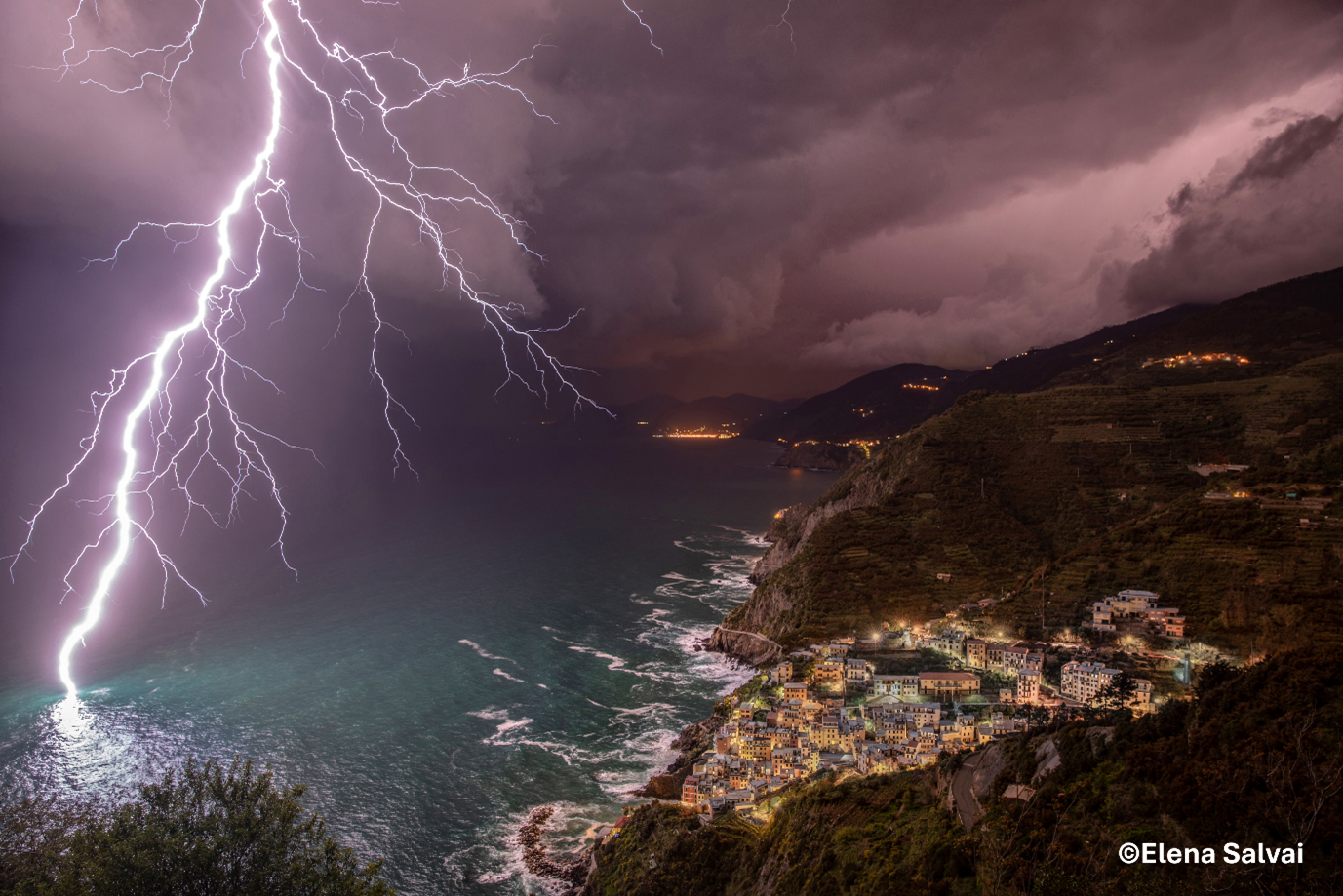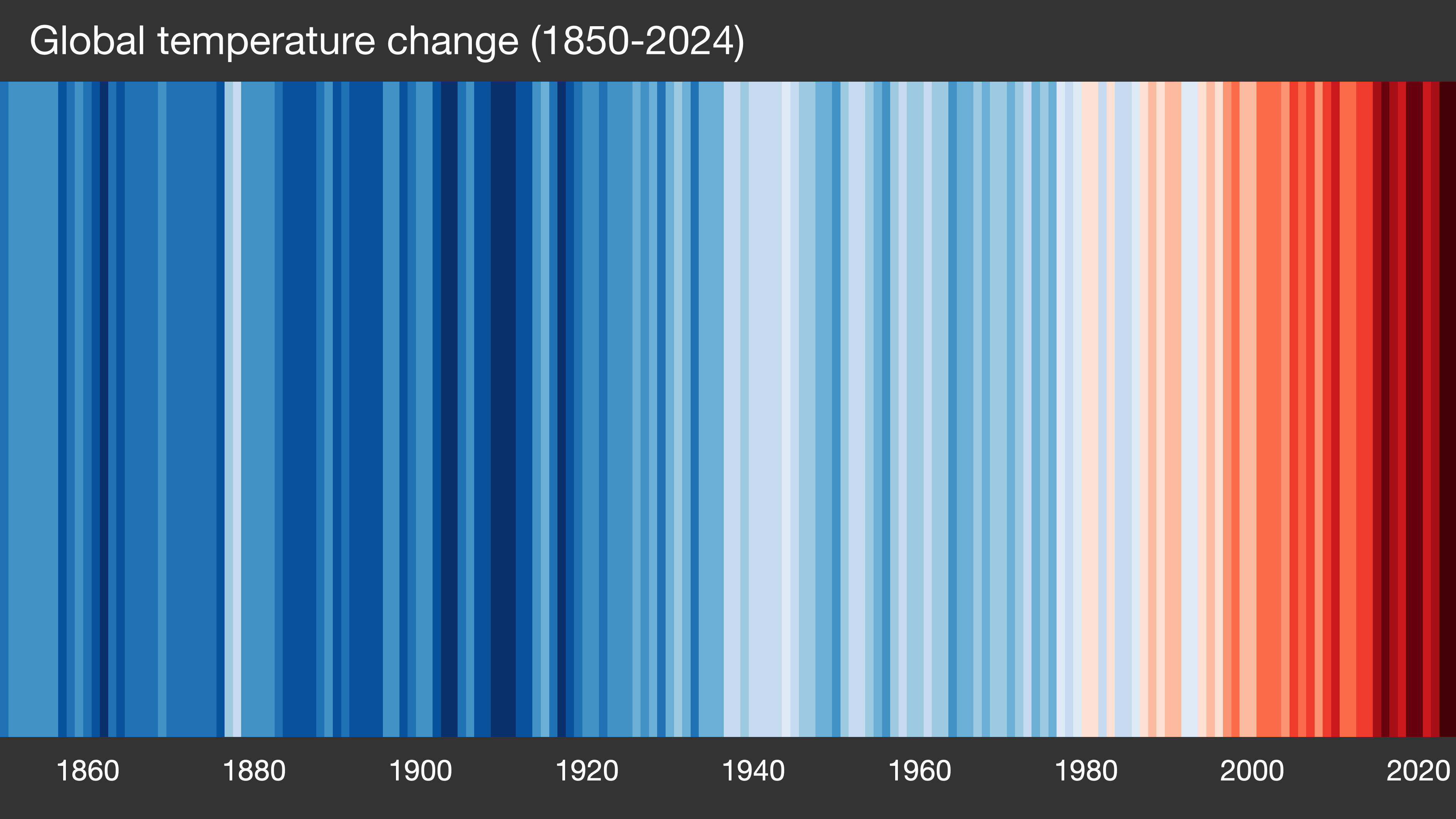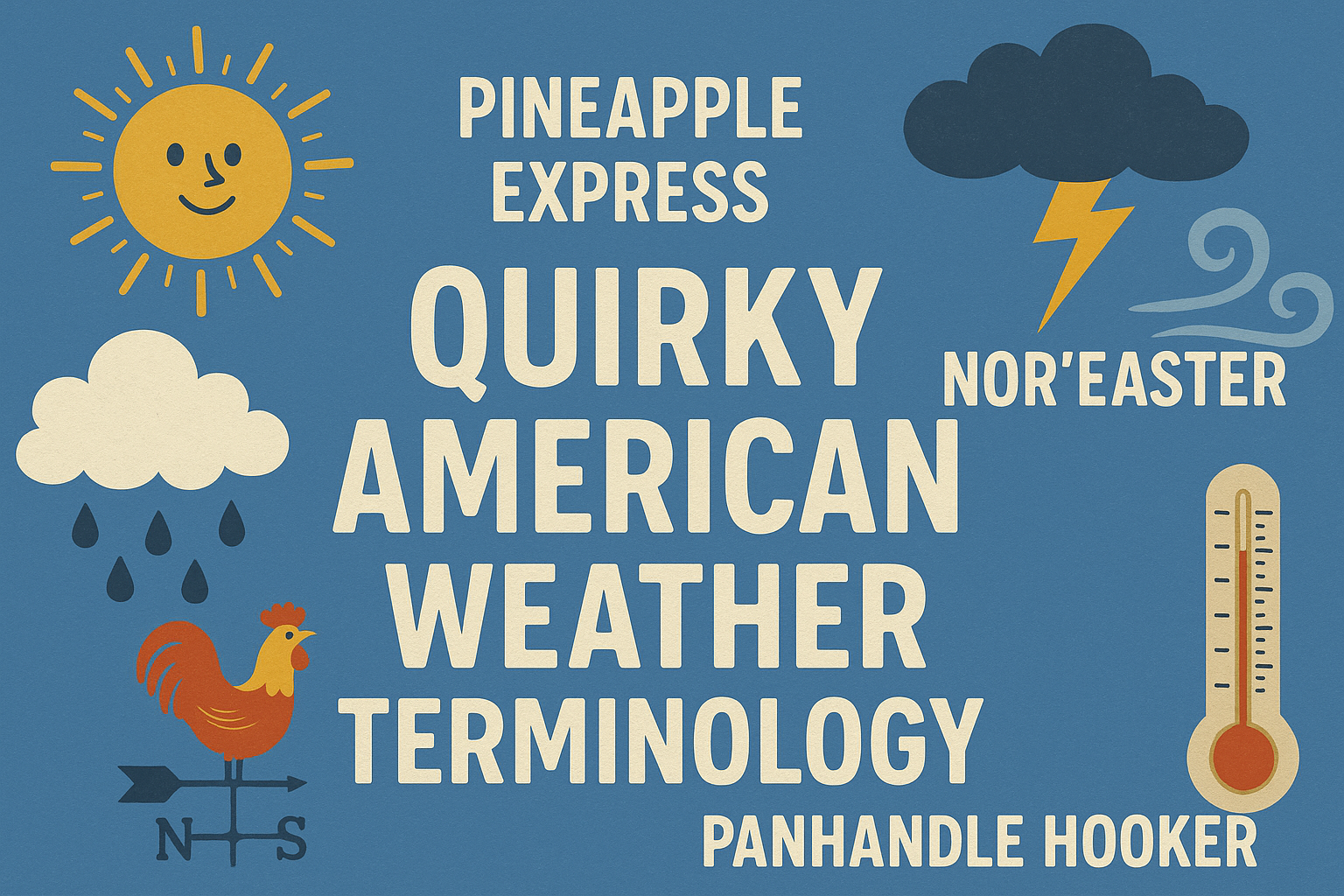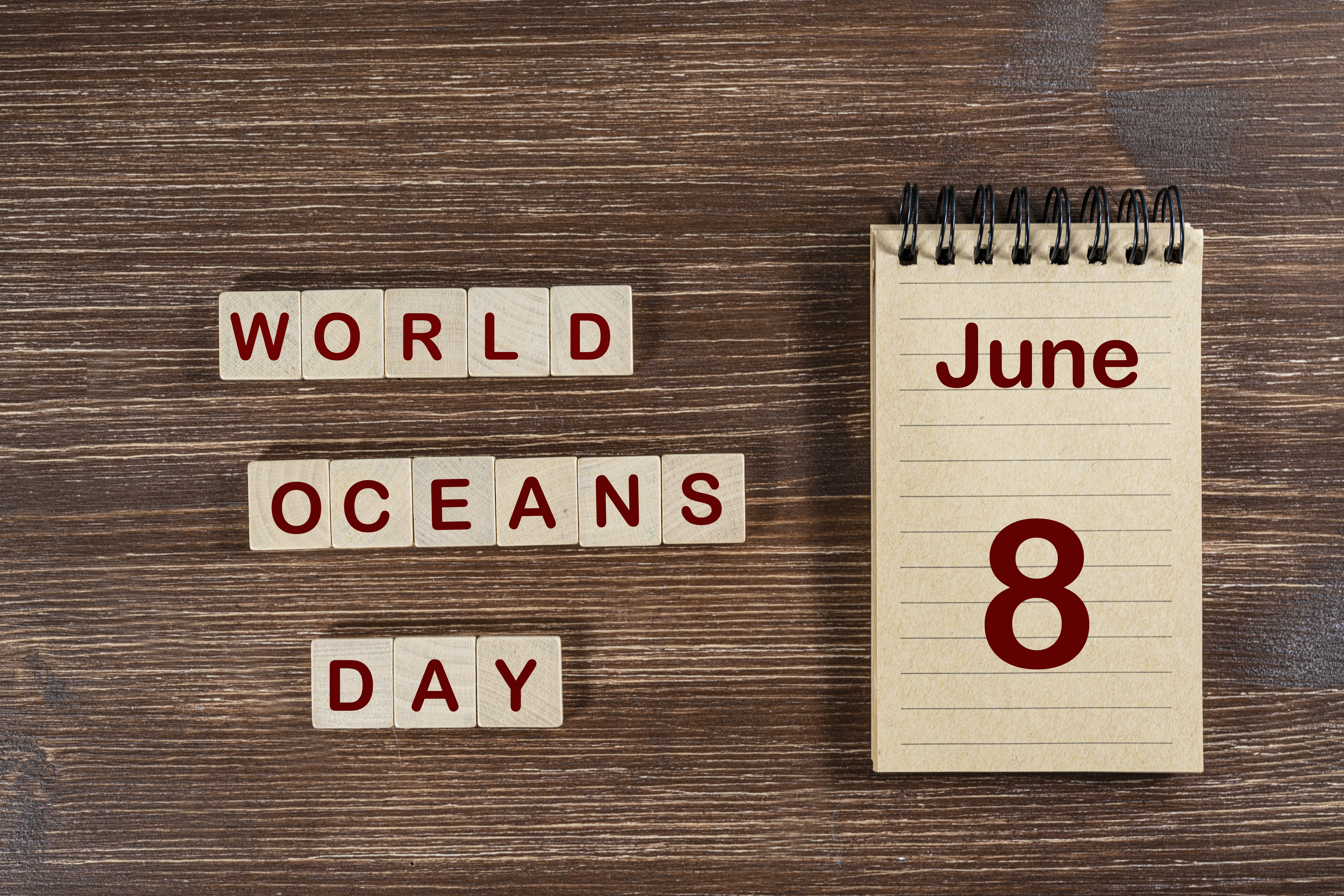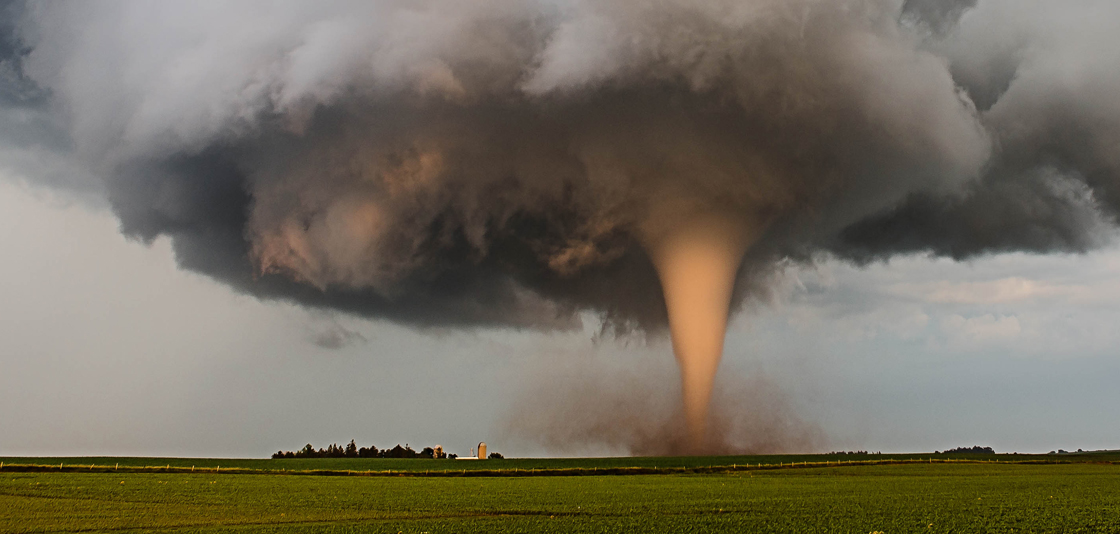

Tornadoes around the world
A tornado churns up dust in the sunset light near Traer, Iowa by Brad Goddard, Orion, IL © NOAA
Tornadoes have been recorded on every continent except Antarctica, with North America at the top of that list for both frequency and severity. But what is a tornado?
A rotating column of air ranging in width from a few yards to more than a mile with wind speeds ranging from 67 to 300 mph, usually accompanied by a funnel-shaped downward extension of a cumulonimbus cloud. The tornado itself moves across the ground at speeds between 0 to 70 mph.
You might be surprised to learn that you are more likely to see a tornado in some parts of the British Isles than you are to see one in most of the United States. For example, England gets more tornadoes per square km than the USA as a whole — 2.2 tornadoes per 10,000 km2 compared to 1.3. Of course, if you take a closer look at states within Tornado Alley, such as Oklahoma, that figure rises to 3.5.
Incredible footage of the tornado ripping through Leitrim County, Ireland this afternoon! 😲
📸 mcnally_92 via Reddit pic.twitter.com/I4vcpe5hSI— Kildare Weather (@KildareMet) December 10, 2023
Tornadoes may be surprisingly common in the British Isles, but they tend to be smaller and less destructive than their American counterparts.
Lethal cocktail
The basic ingredients for tornadoes to occur include strong thunderstorms with warm, moist air near the ground, and drier, cooler air aloft (generally 3,000 to 9,000 metres). You also need winds that change direction as they increase from the ground up.
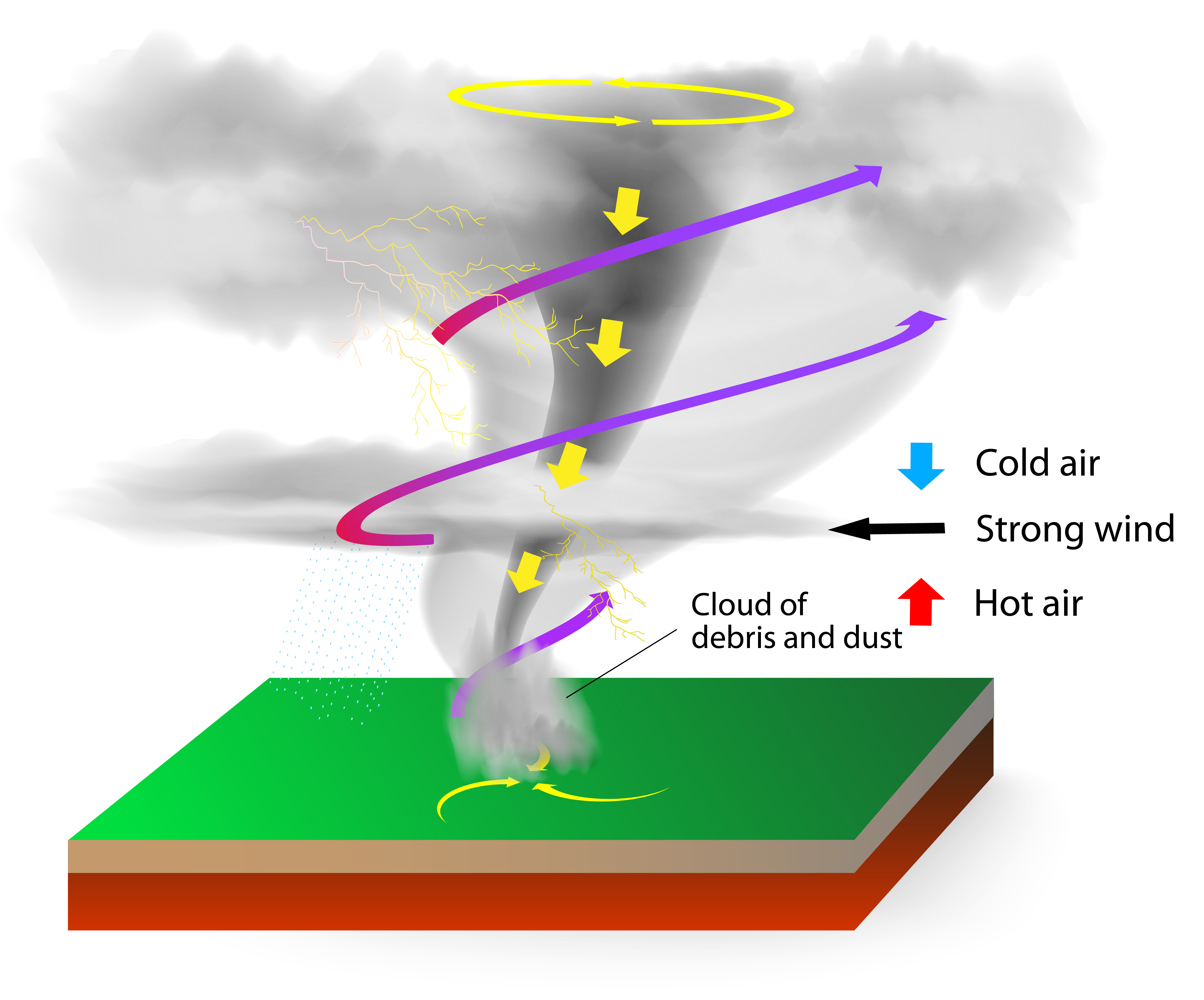
In most of North America, tornadoes are rated with the Enhanced Fujita Scale which ranges from EF0 — the weakest tornado strength, all the way up to EF5. This scale, originally developed by Ted Fujita, is an intensity scale that is based off wind speeds and their related damage.
In Europe a similar ranking system was created in 2023 by the European Severe Storms Laboratory (ESSL) called the International Fujita Scale (IF scale). The new ranking system ranges from IF0 the weakest, up to the strongest category IF5. The biggest difference between the EF and IF scales is that the IF scale has half steps from IF0 to IF3.
“This scale is currently used in ESSL's European Severe Weather Database and relates observed damage to the expected instantaneous wind speed that was responsible for it,” said Dr Pieter Groenemeijer, Director of the European Severe Storms Laboratory. “Unlike the Enhanced Fujita Scale, the wind speed maps observed damage to the full range of wind speeds observed by Doppler radar and can be applied to a wide range of structures, vegetation, vehicles, and many other objects.”
Canada and Japan also have their own scales (CEF and JEF respectively). Meanwhile TORRO, the UK-based Tornado and Storm Research Organisation, developed the Tornado Intensity Scale (T scale). Unlike many of the other scales, the T-scale ranges from T0 to T11, and is closely linked with the Beaufort scale. The T scale is distinct from many others in that it is purely wind-based as opposed to damage-based like the EF scale or IF scale. Because it has more classifications, it is more useful for describing weaker British tornadoes.
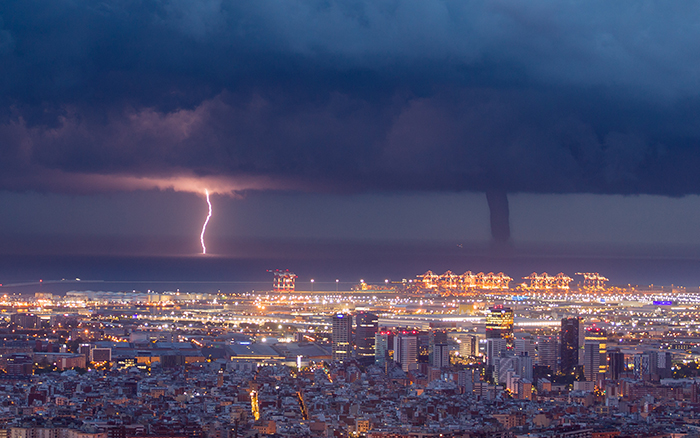
Tornado versus Waterspout
Waterspouts may look very similar to tornadoes thanks to their long funnel-like shape, but they aren’t necessarily formed by the same process.
Waterspouts fall into two categories: fair-weather waterspouts and tornadic waterspouts.
In a similar way to land-based tornadoes, tornadic waterspouts form within a strong thunderstorm at sea, and often come with frequent lightning and high seas. These can be very dangerous.
Fair-weather waterspouts, however, develop over warm open water and are generally not associated with a thunderstorm.
“While tornadic waterspouts develop downward in a thunderstorm, a fair-weather waterspout develops on the surface of the water and works its way upward,” says the National Oceanic and Atmospheric Administration (NOAA). “By the time the funnel is visible, a fair-weather waterspout is near maturity.”
Typically, fair-weather waterspouts dissipate quickly when they make landfall, and rarely make it very far inland.
Dust devils also resemble tornadoes, but are considered to be more of a small but vigorous whirlwind, and are not associated with a storm cloud. These often form in deserts or hot, dry locations, and only last for very short durations.
Top of the tornado list
The United States averages over 1,200 tornadoes every year. That’s more than any other country. In fact, it’s more than Canada, Australia and all European countries combined.
Canada actually ranks second on the list for most tornadoes, with an average of 100 per year.
For Europe, the average number of reported tornadoes over land is around 300 a year, according to the ESSL. Furthermore, another 400 waterspouts in the Mediterranean region that do not reach land are reported annually.
“[In Europe] the country with most reported tornadoes is Russia because of its large surface area, where 76 tornadoes are reported per year in the European part of the country,” Groenemeijer said. “However, the greatest tornado density is in Italy where 48 tornadoes are reported. Besides Italy, areas with a high tornado density include many coastal regions of the Mediterranean Sea, but also northwest France, the United Kingdom, the Benelux countries, and northern Germany.”
Most British tornadoes occur in England — in particular near major cities such as London, Reading, Ipswich, Bristol, Birmingham and Manchester. Part of the reason for the uneven apparent distribution of tornadoes could be population bias since where there are more people, a tornado is more likely to be observed and reported.
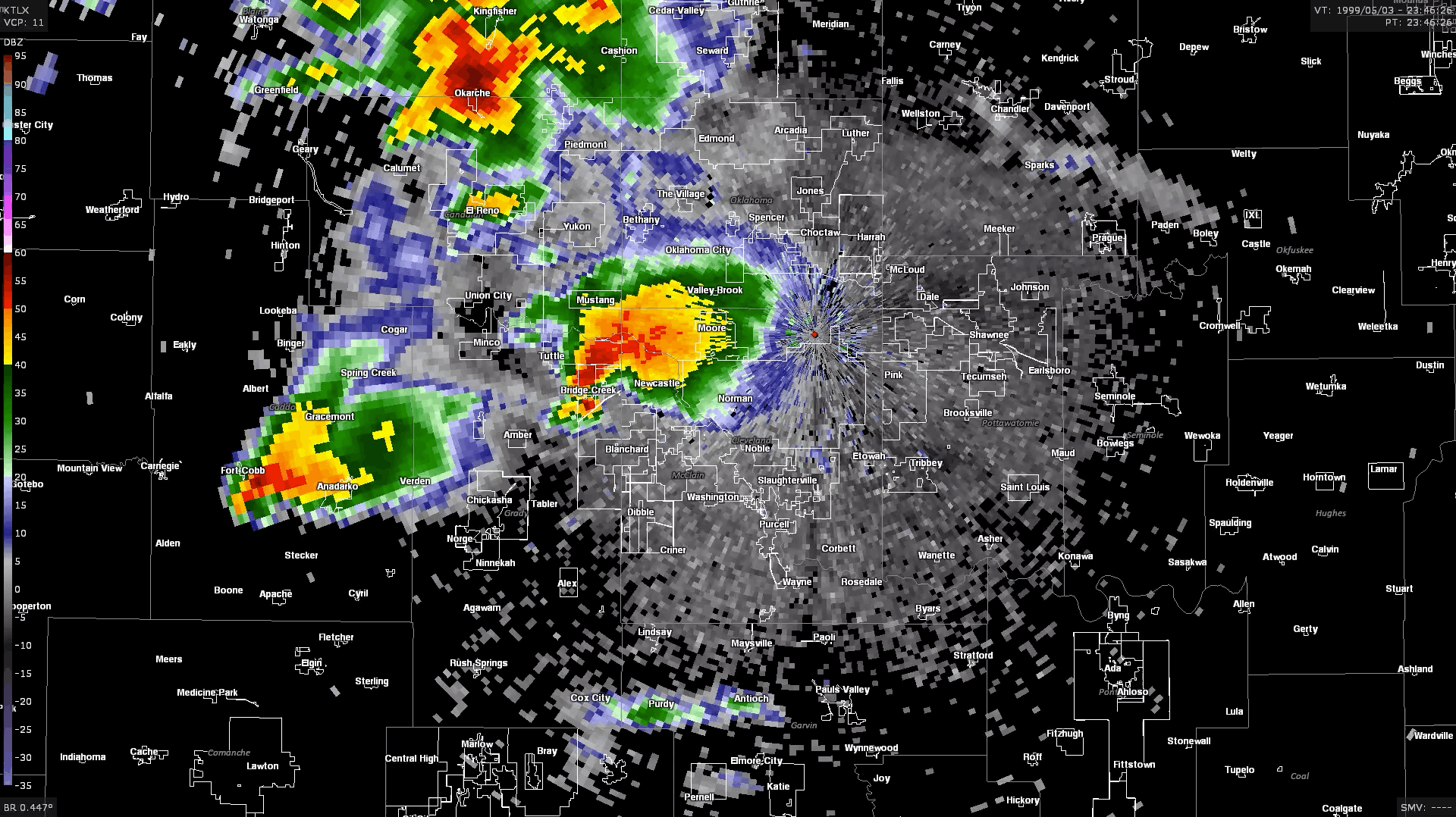
Reporting a tornado isn't easy, because they occur below the clouds they can't be seen on satellite imagery. Although radar can be used to detect rotation, it cannot determine when a tornado is actually on the ground and might not pick up all tornadoes. For this reason, tornadoes in the UK are only identified from reports from the public on the ground or trained spotters followed by site investigations where possible.
The release of the film ‘Twister’ in 1996 appears to have had an influence on tornado reporting in many parts of the world, with significantly more being reported after the film’s release.
Through the year, there are small changes in the places where tornadoes are most likely to be spotted in the UK, and slightly more form in the autumn and summer. In the spring, summer, and autumn, tornadoes are most likely to be seen during the day. However, in winter, tornadoes are equally likely to take place in the day or night.
Within the United States, every state has had at least one tornado, and some have dozens each year. While tornadoes can occur in any month in the United States, the peak season is April, May, and June. For Canada the peak months are June and July.
Most tornadoes in Europe occur in June, July, and August. “These are the months with the greatest amounts of convective available potential energy and the most severe thunderstorms,” said Groenemeijer. “Across the Mediterranean Sea region, the peak is in September and October, an effect caused by the Mediterranean Sea still being very warm after the highest temperatures of mid-summer, which fuels thunderstorms.”
Born in the USA
The United States is special in terms of producing so many tornadoes, especially violent ones.
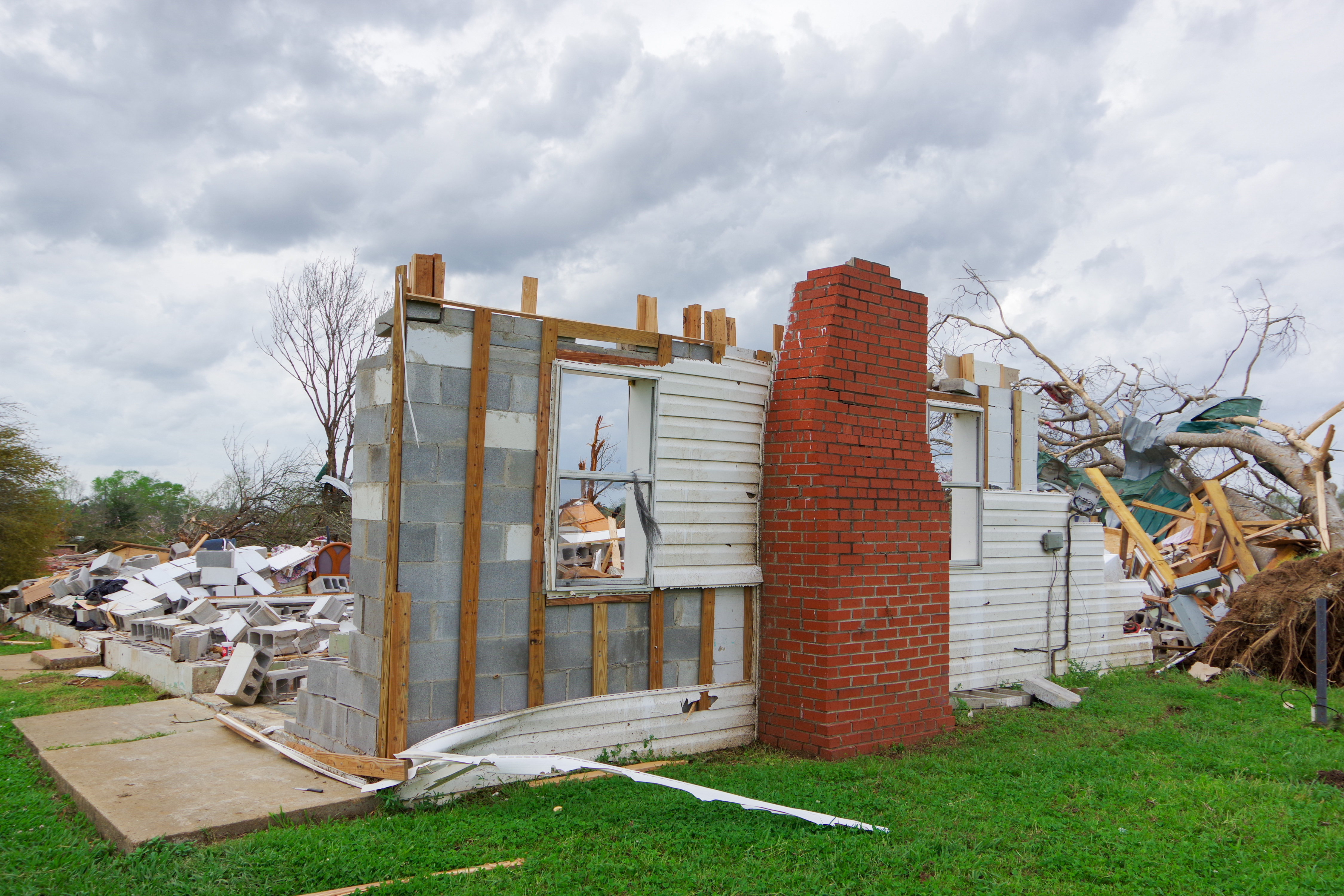
“No place else in the world has the large warm water on its equatorward side with a wide high range of mountains extending from north to south to the west of it,” says Dr. Harold Brooks, senior scientist with the NOAA National Severe Storms Laboratory. “All the other tornado-prone regions have at least one feature suboptimal.”
Low pressure systems in the United States pull warm, moist air from the Gulf of Mexico and cool, dry air aloft from the Rocky Mountains or the High Desert in the southwest. The states that fall in between those two regions end up being in the ideal location for severe weather to ignite. Supercells, or powerful, persistent and rotating storms, are birthing grounds for the strongest tornadoes across the Great Plains.
In the United States, the average number of tornado fatalities per year is 71. But in Europe, where the tornadoes are usually much weaker, the fatalities are estimated to be between 10 and 15 annually.
Other countries that experience tornadoes annually include Germany, Australia, South Africa, eastern China, Japan, Bangladesh, Argentina, and more.
Europe as a whole is comparable to the size of the United States, but there is a vast difference in the number of tornadoes and tornado fatalities. And weaker tornadoes as well as ones that occur in more rural locations may not always be reported.
“Weaker tornadoes are likely still under-reported in some countries, such as France and the UK,” Groenemeijer says. According to The Tornado and Storm Research Organisation (Torro), an average of 36.5 tornadoes are reported each year in the UK.
A study in 2020 concluded that thunderstorms are twice as frequent over the United States, with as many as four times more storm reports, compared to Europe.
One thing that most countries have in common is the time of day that tornadoes occur, which is usually during the afternoon and early evening.
Tornadoes are not limited to the Northern Hemisphere. Australia has dozens every year, and South Africa also reports annual occurrences. South America, much like other continents, has its own tornado hotspot, known as “pasillo de los tornados”. This “tornado corridor” as it translates to, includes Argentina, Uruguay, Paraguay, and a portion of Brazil.
According to the National Institute of Water and Atmospheric Research in New Zealand, tornadoes are relatively rare there. On average, around seven to 10 moderate to strong tornado events are reported in New Zealand every year.
Southern Hemisphere tornadoes typically rotate clockwise, which is the opposite of how tornadoes primarily spin in the Northern Hemisphere.
About the author
 Allison Chinchar is a meteorologist for CNN International, based in Atlanta.
Allison Chinchar is a meteorologist for CNN International, based in Atlanta.
She has covered everything from hurricanes, blizzards, flooding events, and wildfires, receiving an Emmy nomination for her coverage of Hurricane Dorian that hit the Bahamas in 2019. She also covered the Super Tornado Outbreak of April 2011 when over 350 tornadoes hit the Southeastern United States in just four days, with over 200 of those on April 27th alone. Given her background in environmental science she has also covered volcanoes, earthquakes, and other natural disasters, in addition to climate change stories. Chinchar graduated with a Bachelor of Science degree in Atmospheric Science from The Ohio State University. She is also a member of the American Meteorological Society, the Canadian Meteorological and Oceanographic Society, the National Weather Association, and the International Association of Broadcast Meteorology.


